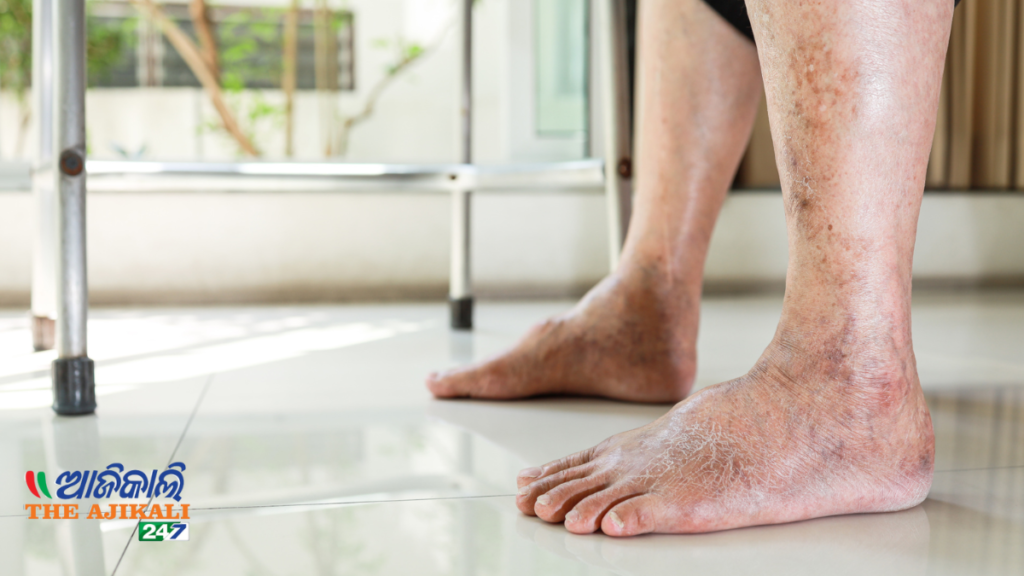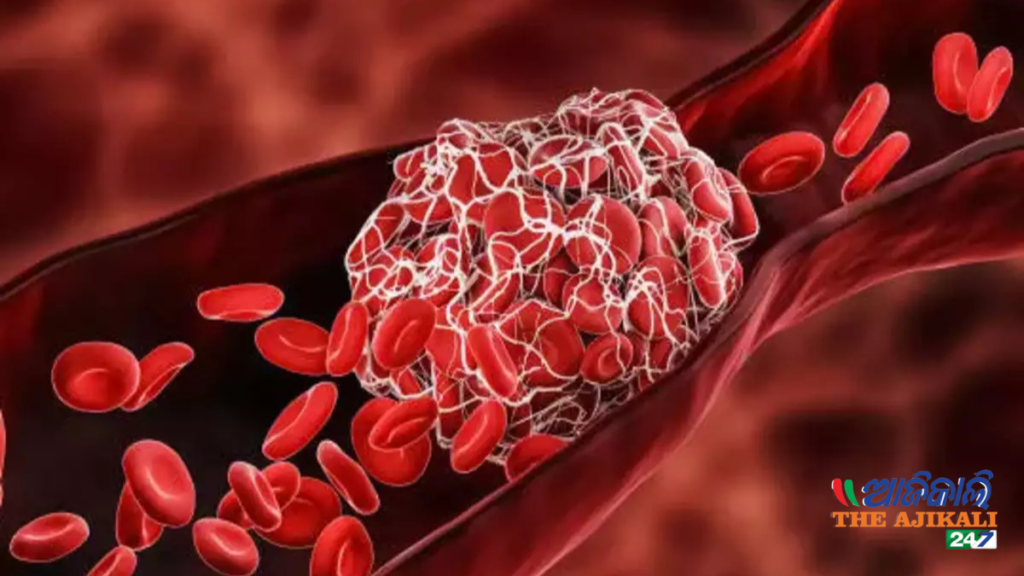Introduction:
When we think about heart health, we often focus on symptoms like chest pain, shortness of breath, or high blood pressure. However, did you know that leg pain could be an early warning sign of a heart stroke? Yes, that’s right! Leg pain, particularly when it occurs in specific patterns or is associated with certain conditions, can be a red flag for underlying cardiovascular issues. In this blog, we will explore the connection between leg pain and heart strokes, understand the underlying mechanisms, and discuss ways to manage and prevent this serious health risk.
Understanding the Connection:
Peripheral Artery Disease (PAD)-

One of the primary ways leg pain can indicate a risk of heart stroke is through a condition known as Peripheral Artery Disease (PAD). PAD occurs when the arteries that supply blood to the limbs become narrowed or blocked due to a buildup of fatty deposits (atherosclerosis). This restriction in blood flow can lead to pain, cramping, or fatigue in the legs, particularly during activities like walking or climbing stairs.
Blood Clots-

Another critical link between leg pain and heart stroke is the formation of blood clots. Deep Vein Thrombosis (DVT) is a condition where blood clots form in the deep veins of the legs. If a part of the clot breaks off, it can travel through the bloodstream and lodge in the arteries of the lungs (pulmonary embolism) or, more rarely, reach the heart and brain, leading to a stroke.
Inflammation and Infection-
Chronic inflammation or infections in the legs can also contribute to cardiovascular problems. Conditions like cellulitis, an infection of the skin and tissues beneath it, can increase the risk of cardiovascular events. The body’s inflammatory response to such infections can destabilize plaques in the arteries, potentially leading to a stroke.
Recognizing the Symptoms:
While not all leg pain is indicative of heart problems, it’s essential to recognize the symptoms that warrant further investigation:
- Intermittent Claudication: Pain or cramping in the legs during physical activity that subsides with rest could suggest PAD.
- Swelling and Redness: Sudden swelling, redness, and warmth in the leg may indicate DVT.
- Persistent Pain: Ongoing pain that doesn’t improve with rest or over-the-counter treatments should be evaluated by a healthcare professional.
- Skin Changes: Noticeable changes in the color or temperature of the legs and feet can be a warning sign.
Preventative Measures and Treatment:
If you experience any of the symptoms mentioned, it’s crucial to seek medical attention promptly. Early diagnosis and treatment can significantly reduce the risk of severe complications such as heart stroke. Here are some preventative measures and treatment options:
Lifestyle Changes:
- Healthy Diet: Adopting a diet rich in fruits, vegetables, lean proteins, and whole grains can help manage cholesterol levels and reduce atherosclerosis.
- Regular Exercise: Engaging in regular physical activity improves circulation and strengthens the cardiovascular system.
- Quit Smoking: Smoking cessation is vital as smoking is a major risk factor for both PAD and heart stroke.
- Weight Management: Maintaining a healthy weight reduces the strain on your heart and arteries.
Medical Interventions:
- Medications: Depending on the underlying condition, medications such as blood thinners, cholesterol-lowering drugs, or anti-inflammatory medications may be prescribed.
- Surgical Procedures: In severe cases of PAD or DVT, surgical interventions like angioplasty or thrombectomy might be necessary to restore proper blood flow.
Regular Check-Ups:
Regular medical check-ups are crucial, especially if you have risk factors such as diabetes, hypertension, or a family history of cardiovascular disease. Early detection and management of potential problems can prevent serious outcomes.
Conclusion:
Leg pain might seem like a minor inconvenience, but it can be a significant indicator of potential heart stroke risk. Understanding the connection between leg pain and cardiovascular health can empower you to take proactive steps toward preventing serious health issues. By recognizing the warning signs, adopting a healthy lifestyle, and seeking timely medical intervention, you can protect your heart and overall well-being. Remember, your legs might be telling you something important—don’t ignore them!

